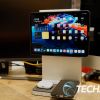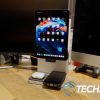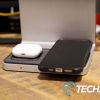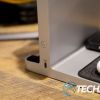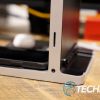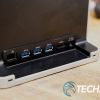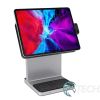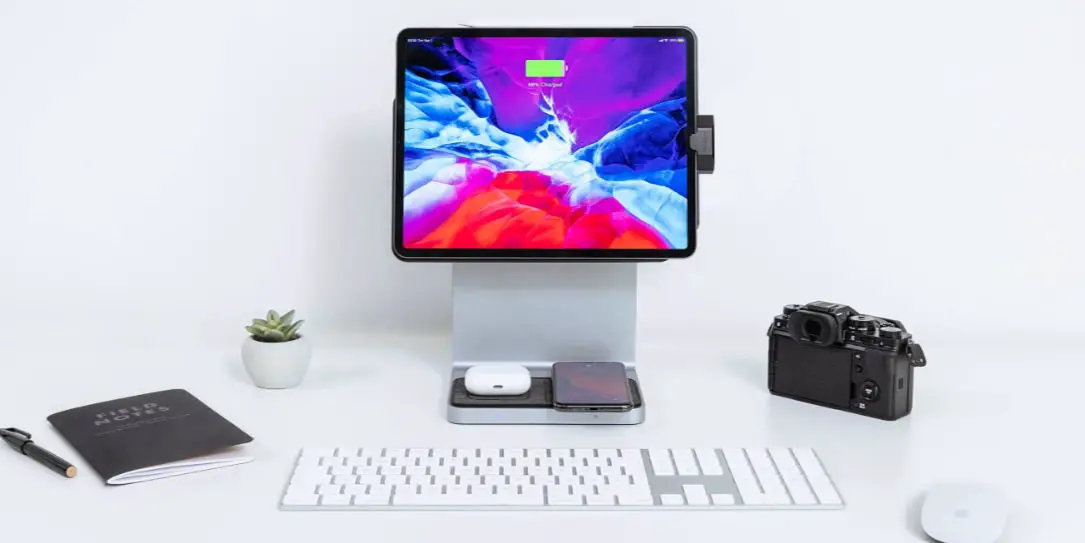
The iPad Pro is one hell of a tool. It used to be that the iPad and other tablets were nothing more than a vehicle for media and entertainment consumption. But over the past few years, Apple has worked hard to try and turn the iPad Pro into a legitimate laptop replacement. The argument on that last point is still open for debate but what we do know is that the Kensington StudioDock just gave the iPad Pro even more versatility.
The Kensington StudioDock isn’t going to come to you at a small price, though. This heavy-duty Swiss army knife of iPad docks is gonna strip your wallet of US$399.99. While that may seem like a hefty price to pay, it will be well worth it for some users. I’m going to be upfront here; this dock is for power users, “pros,” if you will. Unless you like busting out four C-notes for a dock, most basic users won’t get much value from this.
The Kensington StudioDock is a niche product, but that niche is surprisingly broader than others. I think this little dock is going to give power users a lot to love. Read on for our full review of the Kensington StudioDock.
Estimated reading time: 8 minutes
Specifications
The Kensington StudioDock has the following features and specifications:
- Connection Technology: USB-C Alt Mode and Supports USB-C PD 3.0 (37.5W for USB-C iPad Pro or iPad Air)
- Driverless: Yes
- Additional Screen Outputs: 1
- Video Ports: HDMI
- Maximum Resolution: 4K 60Hz
- Power Delivery: 37.5W
- Operating System: iPadOS
- SD Card Reader: Yes (UHS-II, SD4.0)
- USB ports: x4
- 3 x: USB 3.1 Gen1 (back) supporting 5V/0.9A
- 1 x: USB 3.1 Gen1 (side) with 5V/3A or 9V/2.22A charging
- Audio: 1 x 3.5mm Combo Microphone & Headphone Port (side)
- USB Fast Charging: Yes
- Qi Wireless Charging: 2 x Qi Wireless Charging Pads
- Qi Wireless Charging Power: 5W each, iPhone fast charging compatible
- Compatibility: iPadOS 13.5 or higher and iPad Pro 11″ and 12.9″ (2018 or newer USB-C) or iPad Air (2020+) running iPadOS 13.5+
- Data Transfer Speeds: Supports up to 5Gbps data transfer speed
- Ethernet Speed (Mbps): 1000, 100,10
- Warranty: 3-years
What’s In The Box
- Kensington StudioDock
- Power Supply
- Power Cable
- Manual and Documentation

Design
The Kensington StudioDock design adheres to third-party Apple accessory makers’ long tradition to make devices that look as if Apple made them. The StudioDock is made of very premium aluminum and plastics that compliment the iPad Pro nicely. It’s also really solid and weighty. It’s not so heavy as to not be manageable, but it certainly does feel solid.
The iPad Pro holder is made of sturdy plastic and is magnetic to hold the iPad in place. There is also a slightly raised lip along the left edge, and the bottom edge has the USB-C connection—both of these design cues help stabilize and hold the iPad Pro in place. The holder does articulate at an angle and swivels in either portrait or landscape, but it does not move up or down. We wish the option to move it up and down were there, something useful for taller users.
One thing of note, there is an optional Apple Watch charger that connects to the bottom of the holder, allowing you to charge your Apple Watch. We did not receive this option, but we sure wish we did.
Underneath the iPad Pro are two wireless charging pads intended to charge your AirPods Pro and iPhone devices. On the bottom edge of the dock, under the charging pads, you’ll find two LED lights to indicate charging from the two pads.
On the right edge of the dock, you get an SD Card slot and a headphone jack. On the left side of the Kensington StudioDock, you’ll find the power button and a USB 3.1 Gen1 with 5V/3A or 9V/2.22A charging.
On the back of the Kensington StudioDock, you’ll find the rest of your I/O. This includes an HDMI port, Ethernet port, and 3 USB-A 3.1 Gen1 supporting 5V/0.9A. The 20V DC barrel-style port is also located on the back. This also wouldn’t be a Kensington product without the trusty old Kensington lock on the bottom edge as well.
Overall, the design and build quality of the StudioDock is top-notch. Kensington has always been a premium maker of Apple accessories, and this one is no exception to that fact. I like pretty much everything about this design, except for the lack of vertical adjustment.
Kensington StudioDock Gallery
Ease of Use
There’s really nothing you need to do to get started with the Kensington Studio Dock. This is a completely plug-and-play device requiring no software or any fancy setup. Rotating and manipulating the stand is super easy, and the mechanism used here is fluid and responsive.
The most you’ll have to worry about is figuring out what you want to use all the ports for. I will say one thing; you have to make sure you properly mount the iPad Pro to the stand. If you don’t center it and seat it into the USB-C connector completely, it could fall over.
Overall, Kensington made this dock very simple to use. I love that there’s no added software or app, which would add another layer of complexity for the user. The entire software experience comes straight from the iPad itself.
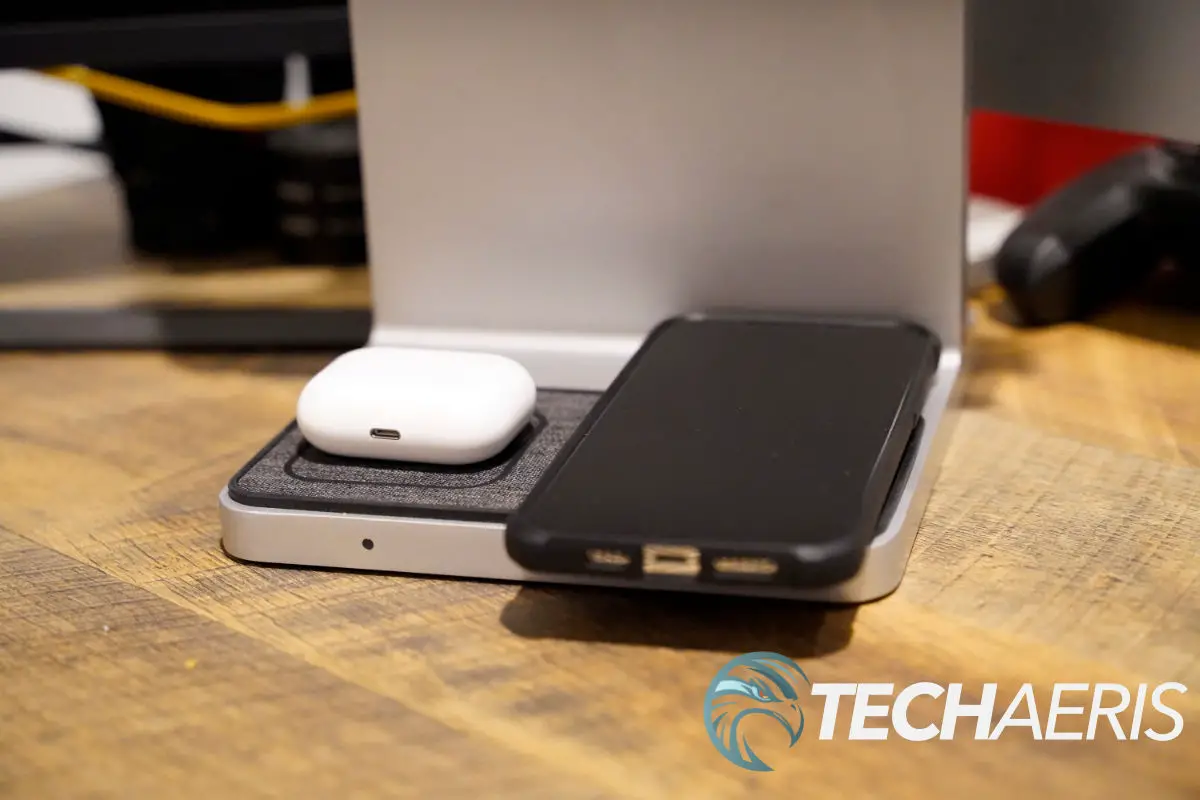
Performance
The Kensington StudioDock is made for users who intend on using their iPad Pro as their main computing device. It’s a valuable add-on to bring your iPad Pro to your desk and expand its usefulness.
That being said, we do not use our iPad Pro as our main computing device but rather as a secondary device. We mostly used the iPad Pro in SideCar mode with our 27″ 5K iMac. In this capacity, it was fantastic. It was also convenient to have our AirPods Pro and iPhone charging beneath the iPad Pro.
For those who do use the iPad Pro as their main device, the options on the Kensington StudioDock should please you. You can connect an external monitor through HDMI, giving you more space when you need it. You can also connect compatible keyboards and mice through iOS since it now supports using these.
The SD Card reader is UHS-II, SD4.0 compatible, which should make photographers and videographers happy. And now that iPadOS supports peripherals; you can connect a variety of iOS compatible devices via the USB ports in the back.
Data transfer speeds are up to 5Gbps, which is plenty for most creatives. The headphone jack’s addition is also useful for videographers who need to use wired headphones for the best sound quality.
I didn’t test how long it took for AirPods Pro and iPhone to charge as I usually only use these chargers when I sit at my desk and not as a primary charger. In my opinion, these chargers are best used to keep your devices charged and ready for when you step away. This way, you’re always topped off.
I did try and edit a short video in LumaFusion with the iPad in the Kensington StudioDock, and it worked great. Not that the dock has anything to do with the software, it was just nice to slip my SD Card into the slot and start in on editing. It was also nice to have LumaFusion on a larger screen using a monitor connected to the StudioDock.
Using Apple Pencil with the iPad Pro in the StudioDock was pretty easy. The height of it was near perfect when I rested my elbow on the table to write or draw.
Overall, performance is going to vary on what you’re using this thing for. Its ability to expand the usefulness of your iPad Pro is where its strong points lie. I also see the benefit for some users who may want to use their iPad Pro as a second screen to their iMac or MacBook Pro. This is probably an expensive solution to that problem, but it is still a solution, and the addition of the charging pads is nice.
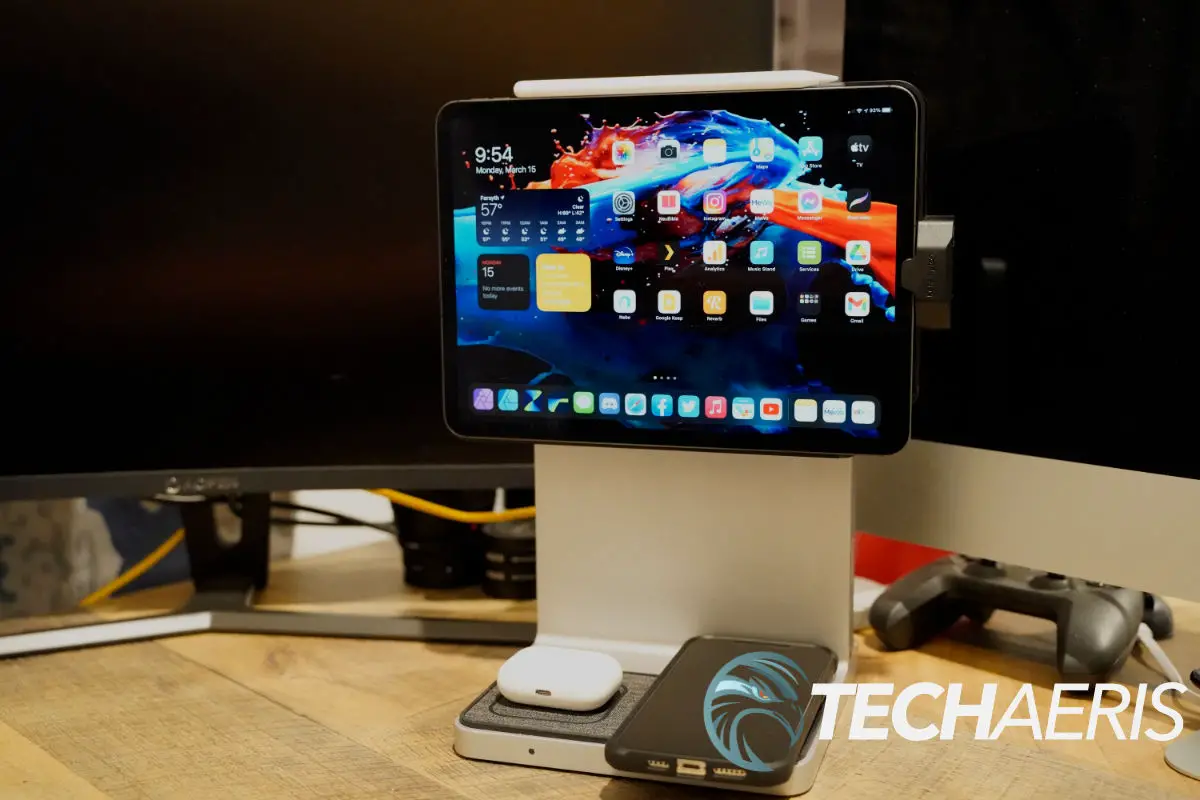
Price/Value
The Kensington StudioDock isn’t going to be cheap to procure. This accessory is going to run you US$399.99, and I admit, that is going to be a tough pill to swallow for the regular user. But really, the StudioDock wasn’t made for regular users. This was made for power users who have invested in the iPad Pro as their primary working device.
For those users who are banking on their iPad Pro to see them through their workflow, well, the StudioDock holds a ton of value to those users. For users who use their iPad Pro for strictly entertainment or only use it occasionally, then this dock probably doesn’t make much sense.
Wrap Up
The Kensington StudioDock is one of those products that’s going to raise a lot of debate likely. There will be plenty of users railing against it for its price and will even go to the extent of ridiculing those who consider buying it. Then there are those users who see the value in this peripheral because it adds a ton of functionality to the iPad Pro.
I think I’ve voiced my thoughts here as well as I can. I don’t see the Kensington Studio Dock being worth the cost to users who aren’t really making full use of their iPad Pro. However, StudioDock could very well be an essential tool for users who are committed to the iPad Pro as their primary working device. I leave it to you to decide which one of those two users you are.
In some of our articles and especially in our reviews, you will find Amazon or other affiliate links. As Amazon Associates, we earn from qualifying purchases. Any other purchases you make through these links often result in a small amount being earned for the site and/or our writers. Techaeris often covers brand press releases. Doing this does not constitute an endorsement of any product or service by Techaeris. We provide the press release information for our audience to be informed and make their own decision on a purchase or not. Only our reviews are an endorsement or lack thereof. For more information, you can read our full disclaimer.

